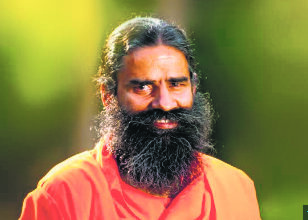What is the Tort of Interference? Strictly speaking, the foundational decision which recognised the economic tort of interference in English contract law was the case of Lumley v. Gye rendered by the Queen’s Bench in 1853. However, it was not until the year 1978 when, in the case of Greig v. Insole, the Chancery Division crystallized the fundamental conditions to be fulfilled by a plaintiff in a suit for Tortious Interference.
The broad parameters encapsulating the tort of interference set forth in Grieg’s case were cited with approval in a decision rendered by the Calcutta High Court in Lindsay International Pvt. Ltd v. Laxmi Niwas Mittal. This decision was perhaps what can be stated to be introductory case on the subject in Indian jurisprudence.
Developed, as the law become thereafter, the threshold conditions for the commission of this tort came to be casted into the following formulation:
Firstly, there needed to be a contract which is clearly identifiable. Existence of a contract is an essential concomitant for this tort to have occasioned. The act of wrongfully inducing a person not to enter into a contract does not amount to tortious interference (see: Midland Cold Storage Ltd. v. Steer & Ors)
Secondly, the defendant must have had knowledge of the existence of the contract. It was, however not necessary for the defendant to know the exact ingredients of the contract.
Thirdly, the breach of such contract must be have been caused by the defendant by unlawful means.
Fourthly, damages ought to have occasioned to the plaintiff due to such breach.
Winfield and Jolowicz on Tort, best condenses the commission of this tort, with the aid of an illustration, as follows:
“A commits a tort if, without lawful justification, he intentionally interferes with a contract between B and C, (a) by persuading B to break his contract with C, or (b) by some other act, perhaps only if tortious in itself, which prevents B from performing his contract.”
The recent decision by the Hon’ble High Court of Delhi in INOX Leisure Limited v. PVR Limited is the latest addition in the treatise to Tortious Interference Suits, albeit on a view au contraire.
Factually, the premise of the suit filed by Inox against PVR Cinemas, was, inter alia, that while Inox, with an intent to expand its business footprint, had entered into a binding term sheet with a developer with regard to a property in Amritsar, PVR Cinemas continued to persuade the developer to enter into an agreement for that property with itself, by inducing it to breach the term sheet entered into by Inox and the developer. It was further averred that the developer entered into an agreement qua the same property with PVR and informed Inox that the term sheet stood automatically terminated on account of its failure to execute the main Transaction Document within the stipulated time. This, according to Inox, happened at the behest of PVR and illegal inducement of the developer by PVR was attributed. Therefore in a nutshell, Inox’s case was that PVR interfered in the contractual relationship of Inox with a third party, inspite of being aware of such contractual relationship.
The Court postulated three possible scenarios which could have occasioned, and offered the correct remedy for each of them, as follows:
If Inox had binding lease with the developer/owner of the properties and had not been put into possession of the property, his remedy was to seek to be put into possession of the property.
If Inox had no binding agreement or a lease but only an agreement to lease, its remedy was to sue for specific performance thereof; and finally.
If Inox had a promise from the developer/owner of the said properties to grant a license to the plaintiff of the said properties and the developer/owner were in violation thereof, its remedy was to claim damages from them.
However, the High Court held that in none of the three situations, was a Suit for Tortious Interference a proper remedy against a third party (in that case, PVR). The court held that “…grant of injunction claimed by the plaintiff on the premise of the actions of the defendant comprising a tortious act of interference with contractual relations of the plaintiff, would be in violation of the fundamental right of the defendant, its promoters and directors to carry on trade and business…”.
The aid to the above enunciation was premised on a prior decision of the Hon’ble Delhi High Court in Modicare Limited v. Gautam Bali wherein it was held as follows:
“37.…where should the Court draw the line, between what constitutes enticement to commit breach of contract and unlawful interference in business on the one hand and competition on the other hand. Any new entrant in the market, to be able to create a niche for itself, in spite of the existing players, has to compete with the existing players, by approaching the same customers and the same cache of employees who over the years have acquired expertise in that particular field. ….In my view, it is practically impossible to draw a line between such persons, on their own approaching the new entrant, and the new entrant approaching them….”
The Delhi High Court in Inox and in Modicare has in so many words expressed the view that the tort of interference could perhaps not exist in a modern day economy which is epitomized by free market competition. To summarize, the view expressed by the Delhi High court is that these tortious interference suits are infact antithetical to free market competition and stifle the growth of the economy.
The house is divided. The view expressed by the Calcutta High Court, recognizing this tort, clashes with the view of the Delhi High Court in distancing from its application in the contemporary economic climate.
Neither views can be discounted or applied in toto. It is felt that the view of the Calcutta High Court in recognizing the tort of interference has to abide by respecting the consideration for competition in the economy. For this balanced consideration the following questions (ofcourse, in addition to the above restated threshold paramenter) may need to be addressed by the courts to decipher whether an injunction against a third party for commission of said tort has occasioned or not:
Whether there is a concluded contract between two parties, of which the third party (i.e. the defendant) has express knowledge, however infinitesimal the knowledge may be?
What is the point of inflection where free market competition ends and tortious interference begins; and most importantly
Whether the presence of sufficient alternate remedies between two contracting parties such as suits seeking specific performance or of damages, would be an equitable bar from entertaining a suit against a third party for tortious interference?
Therefore, it seems that while the tort took more than a century to find its feet in common law, the same might only receive limited application in the Indian context on account of extreme globalization and competition. Only an authoritative pronouncement, perhaps by the Supreme Court, can now clarify and help converge the law on the issue. Short of that, the uncertainty of the law will only impede the development of the governing law on commercial transactions.
Adv. By Rushab Aggarwal is a advocate practising at the Supreme Court of India.










